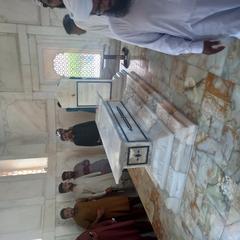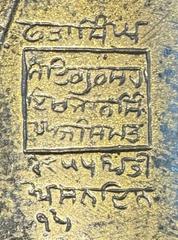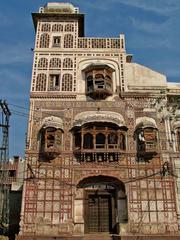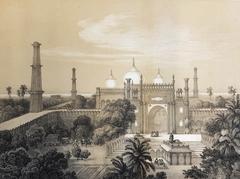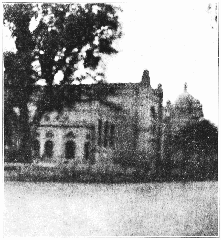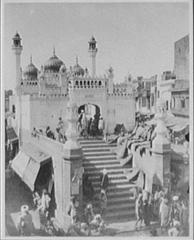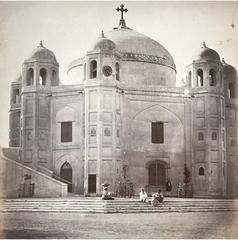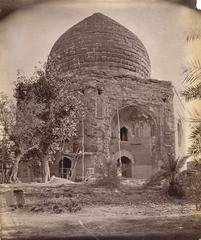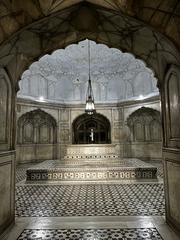
Comprehensive Guide to Visiting Shahi Qila Lahore, Pakistan
Date: 17/07/2024
Introduction
The Shahi Qila, also known as the Lahore Fort, stands as a testament to Pakistan’s rich historical and cultural heritage. Located in the heart of Lahore, this UNESCO World Heritage Site is a magnificent symbol of the Mughal Empire’s architectural grandeur and historical significance. The fort has witnessed the rise and fall of empires, from its early foundations in the 11th century to its transformation under Mughal rulers such as Emperor Akbar, Jahangir, Shah Jahan, and Aurangzeb. Each ruler contributed significantly to the fort’s expansion and embellishment, making it a focal point of Mughal power and artistry. Beyond its architectural marvels, Shahi Qila also holds cultural, political, and religious significance, serving as a residence, administrative center, and place of worship throughout its history (UNESCO, Archnet, Dawn).
This comprehensive guide aims to provide visitors with essential information on exploring Shahi Qila, including its visiting hours, ticket prices, travel tips, and nearby attractions, ensuring a memorable and enriching experience.
Table of Contents
- [Introduction](#introductionintroduction)
- [History](#historyhistory)
- [Early Foundations and Mughal Era](#early-foundations-and-mughal-eraearly-foundations-and-mughal-era)
- [Akbar’s Contributions](#akbars-contributionsakbars-contributions)
- [Jahangir and Shah Jahan’s Enhancements](#jahangir-and-shah-jahans-enhancementsjahangir-and-shah-jahans-enhancements)
- [Aurangzeb’s Reign](#aurangzebs-reignaurangzebs-reign)
- [Sikh and British Periods](#sikh-and-british-periodssikh-and-british-periods)
- [Post-Independence and Restoration Efforts](#post-independence-and-restoration-effortspost-independence-and-restoration-efforts)
- [Architectural Highlights](#architectural-highlightsarchitectural-highlights)
- [Visiting Hours and Tickets](#visiting-hours-and-ticketsvisiting-hours-and-tickets)
- [Travel Tips](#travel-tipstravel-tips)
- [Nearby Attractions](#nearby-attractionsnearby-attractions)
- [FAQ](#faqfaq)
- [Conclusion](#conclusionconclusion)
- [References](#referencesreferences)
Exploring the Shahi Qila
History
Early Foundations and Mughal Era
The origins of the Shahi Qila can be traced back to antiquity, with evidence suggesting that the site has been fortified since at least the 11th century. However, the most significant developments occurred during the Mughal era. The fort as it stands today was largely constructed under the reign of Emperor Akbar the Great in the late 16th century. Akbar initiated the transformation of the fort from a mud-brick structure into a grand edifice of red sandstone and marble, reflecting the architectural grandeur of the Mughal Empire (UNESCO).
Akbar’s Contributions
Emperor Akbar expanded the fort significantly, incorporating Persian architectural elements and establishing it as a symbol of Mughal power. The fort’s strategic location near the Ravi River made it a critical military and administrative center. Akbar’s additions included the construction of the Alamgiri Gate, which served as the main entrance and was designed to impress visitors with its imposing structure (Archnet).
Jahangir and Shah Jahan’s Enhancements
The fort saw further embellishments under Akbar’s successors, Jahangir and Shah Jahan. Jahangir added several gardens and pavilions, including the famous Picture Wall, adorned with intricate frescoes and tile work depicting scenes of court life, hunting, and mythology (Dawn). Shah Jahan, renowned for his architectural achievements, including the Taj Mahal, contributed to the fort’s aesthetic by adding the Sheesh Mahal (Palace of Mirrors) and the Naulakha Pavilion, both masterpieces of Mughal architecture featuring elaborate mirror work and precious stone inlays (The Express Tribune).
Aurangzeb’s Reign
Aurangzeb, the last of the great Mughal emperors, constructed the Badshahi Mosque, one of the largest mosques in the world, adjacent to the fort. This addition enhanced the fort’s religious significance and architectural splendor. The mosque’s grand scale and intricate design are a testament to the zenith of Mughal architectural prowess (Britannica).
Sikh and British Periods
Following the decline of the Mughal Empire, the Shahi Qila came under the control of the Sikh Empire in the early 19th century. Maharaja Ranjit Singh used the fort as his residence and made several modifications, including the addition of a Sikh-style palace known as the Kharak Singh Haveli. The fort’s role as a political and military hub continued during this period (The News International).
During the British colonial period, the fort was used for military purposes, and many of its structures were repurposed or neglected. The British made some alterations to the fort’s layout, but their impact was relatively minor compared to the extensive Mughal and Sikh contributions (Pakistan Tourism Development Corporation).
Post-Independence and Restoration Efforts
After the partition of India in 1947, the Shahi Qila became a part of Pakistan. Recognizing its historical and cultural significance, the Pakistani government initiated several restoration projects to preserve the fort’s architectural heritage. In 1981, the fort, along with the adjacent Shalimar Gardens, was designated a UNESCO World Heritage Site, highlighting its global importance (UNESCO).
Architectural Highlights
The Shahi Qila is renowned for its diverse architectural styles, reflecting the various periods of its construction and renovation. Key highlights include:
- Alamgiri Gate: Built by Aurangzeb, this gate is a prime example of Mughal military architecture, designed to withstand sieges and impress visitors with its grandeur.
- Sheesh Mahal: Constructed by Shah Jahan, this palace is famous for its intricate mirror work and is considered one of the finest examples of Mughal decorative art.
- Naulakha Pavilion: Another of Shah Jahan’s contributions, this pavilion is noted for its elegant design and the use of precious stones in its decoration.
- Picture Wall: A unique feature added by Jahangir, this wall is adorned with vibrant frescoes and tile work, depicting various scenes from Mughal life.
Visiting Hours and Tickets
To make the most of your visit to the Shahi Qila, here is some essential information:
- Visiting Hours: The fort is open from 9:00 AM to 5:00 PM daily. However, it’s recommended to check any seasonal changes or special closures before planning your visit.
- Ticket Prices: The entrance fee is PKR 30 for Pakistani citizens and PKR 500 for foreign tourists. Children under 12 and senior citizens may be eligible for discounted tickets.
- Best Times to Visit: The best time to visit the fort is during the cooler months from October to March. Early mornings and late afternoons are ideal for avoiding the crowds and capturing the best photos.
Travel Tips
- How to Get There: The Shahi Qila is located in the heart of Lahore, near the Badshahi Mosque. It is easily accessible by car, rickshaw, or public transport. If you’re traveling by metro, the nearest station is the Orange Line’s Shalamar Gardens stop.
- Recommended Routes: For a scenic route, consider taking the Mall Road, which is lined with historical buildings and landmarks.
- Nearby Accommodation: There are several accommodation options near the fort, ranging from budget hotels to luxury stays. Popular choices include Pearl Continental Lahore and Avari Hotel Lahore.
Nearby Attractions
While you’re in Lahore, don’t miss these other historical and cultural sites:
- Badshahi Mosque: Adjacent to the Shahi Qila, this grand mosque is a marvel of Mughal architecture.
- Shalimar Gardens: A UNESCO World Heritage Site, these gardens offer a peaceful retreat with their beautiful fountains and floral displays.
- Minar-e-Pakistan: A national monument symbolizing the struggle for independence, located in Iqbal Park.
FAQ
-
What are the visiting hours for Shahi Qila? The fort is open from 9:00 AM to 5:00 PM daily. Check for any seasonal changes before your visit.
-
How much are the tickets for Shahi Qila? The entrance fee is PKR 30 for Pakistani citizens and PKR 500 for foreign tourists. Discounts may be available for children and seniors.
-
What are the best times to visit Shahi Qila? The best time to visit is during the cooler months from October to March, preferably in the early morning or late afternoon.
Conclusion
The Shahi Qila in Lahore encapsulates the grandeur of the Mughal era and stands as a vital part of Pakistan’s cultural heritage. Its architectural splendor and historical significance make it a must-visit landmark for history enthusiasts, culture buffs, and casual travelers alike. From the intricate mirror work of the Sheesh Mahal to the imposing Alamgiri Gate, the fort offers a rich and immersive experience. With detailed visitor information, including the best times to visit, ticket prices, and travel tips, this guide ensures that your visit to Shahi Qila is both enjoyable and informative. Additionally, nearby attractions such as the Badshahi Mosque and Shalimar Gardens further enhance the historical and cultural exploration of Lahore. As efforts continue to preserve and maintain this iconic site, Shahi Qila remains a testament to the rich legacy of the Mughal Empire, inviting visitors to delve into its storied past (The Express Tribune, Britannica).
References
- UNESCO. (n.d.). Lahore Fort and Shalimar Gardens. Retrieved from https://whc.unesco.org/en/list/171
- Archnet. (n.d.). Lahore Fort. Retrieved from https://www.archnet.org/sites/1746
- Dawn. (2018, April 9). Picture Wall of Lahore Fort - Cultural Heritage. Retrieved from https://www.dawn.com/news/1399984
- The Express Tribune. (2020, October 19). The Sheesh Mahal: A Glimpse into the Mughal Era. Retrieved from https://tribune.com.pk/story/2268390/the-sheesh-mahal-a-glimpse-into-the-mughal-era
- Britannica. (n.d.). Badshahi Mosque. Retrieved from https://www.britannica.com/topic/Badshahi-Mosque
